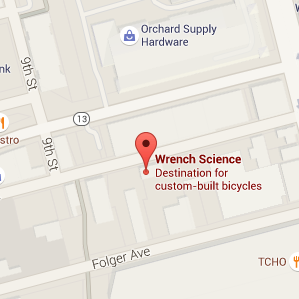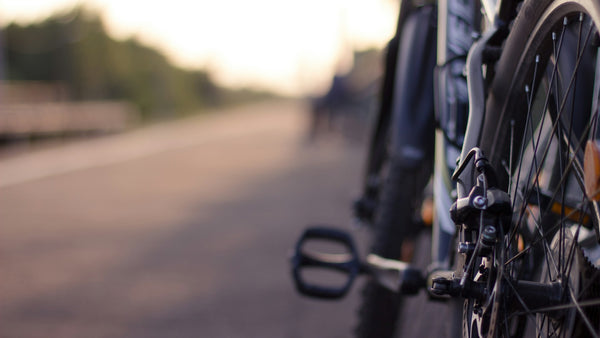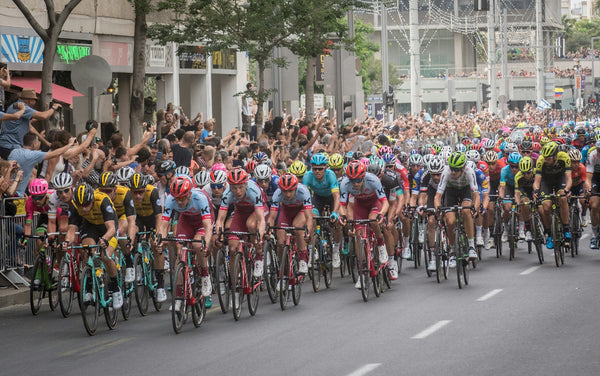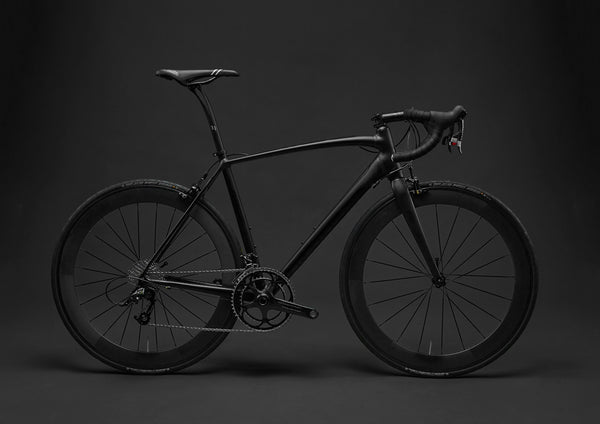Bike tire pressure philosophy has changed a lot in recent years. Though it used to be common to pump up your road tires to 120 or 130 psi (8 or 9 bar), it is now much more common to run those same tires at a much lower pressure.
The air pressure for bike tires will be different depending on whether you are riding a road bike, gravel bike, or mountain bike, but the reasoning behind why you are running that particular pressure will typically be very similar. Road bike tire pressure will generally be higher than gravel bike tire pressure, while mountain bike tire pressure will be even lower than gravel bikes.
What are some deciding factors in tire pressure?
- Rim width/tire pressure recommendations
- Rider weight
- Road conditions (smooth vs rough)
- Temperature
- Dry/wet conditions
Guidelines for road and gravel bike tire pressure
A few factors have contributed to changing how much pressure in bike tires should be used with a trend toward a general lowering of bike tire pressure in the past ten years. Most importantly, studies have shown that lower pressure in tires helps you go faster thanks to the improved rolling resistance. It seems counter-intuitive, especially if you grew up pumping your tires to be as hard as possible.
It has to do with the decreased deflection a tire will undergo when riding on anything but the smoothest surface. A normal city road has imperfections that will make the tire bounce off of when pumped to too high a pressure, while a lower pressure will allow the tire to roll over rougher roads without suffering the same level of deflection. This helps the tire roll much faster and with greater overall rider comfort.
Rim widths going wider
Once it became clear that lower pressure in tires offers better rolling resistance, it became clear that wider tires would increase those improvements by making it possible to run tires safely at lower pressures. Improved aerodynamics plays a role in the equation too since putting a wider tire on an old school narrow rim would cause the tire to bulge well outside the rim width, resulting in unwanted drag. Widening rims and tires together means that riders can get the benefit both from the improved rolling resistance without losing any of the aero efficiency of the wheel/tire interface.
Keep in mind, though, that if you are still riding with wheels that were designed to run with narrower tires – usually 22 mm to 25 mm – you won’t necessarily want to follow this trend since there is a limit to tire width when using narrow rims. Always follow wheel manufacturer's recommendations for minimum and maximum tire widths on their rims.
Rider weight
As a general rule of thumb, lighter riders can run their tires at lower pressures than larger riders. It’s tied into the deflection issue and the reduced pressure a lighter rider places on the tires when riding.
Road quality conditions
You’ll feel greater benefit from lower tire pressure the rougher the roads get. That’s one reason that track racers still use narrow tires pumped up to 130 or even 145 psi (9-10 bar). They do not need to worry about reducing the impact of deflection since they are riding on a perfectly smooth surface. But if you are riding on poorly maintained city roads, then wider tires and lower pressure will not only be faster, but more comfortable.
Temperature
You might not think to consider it when pumping up your tires before a ride, but the outside temperature impacts tire pressure and tire performance. For instance, if you are riding on a very hot day, then you might want to reduce your tire pressure even more since the heat will cause it to increase naturally. Similarly, when you are riding in extremely cold conditions in winter, you might want to add a touch of pressure since colder temperatures will naturally reduce the pressure in the tire.
Those of you still riding rim brakes will also need to keep in mind the effect braking has on the tire pressure, since when you brake a lot, the friction causes the rim to heat up. Anyone who remembers Joseba Beloki’s crash at the 2003 Tour de France will understand just how dangerous braking too much can be, especially when riding tubulars and rim brakes.
Dry/wet road conditions
The issue of weather conditions and bike tire pressure extends to whether the roads are dry or wet. When it has been raining and you are facing wet roads or if your winter rides sometimes force you to tackle snowpack, you will want to run tires at a lower pressure than usual in order to maximize grip.
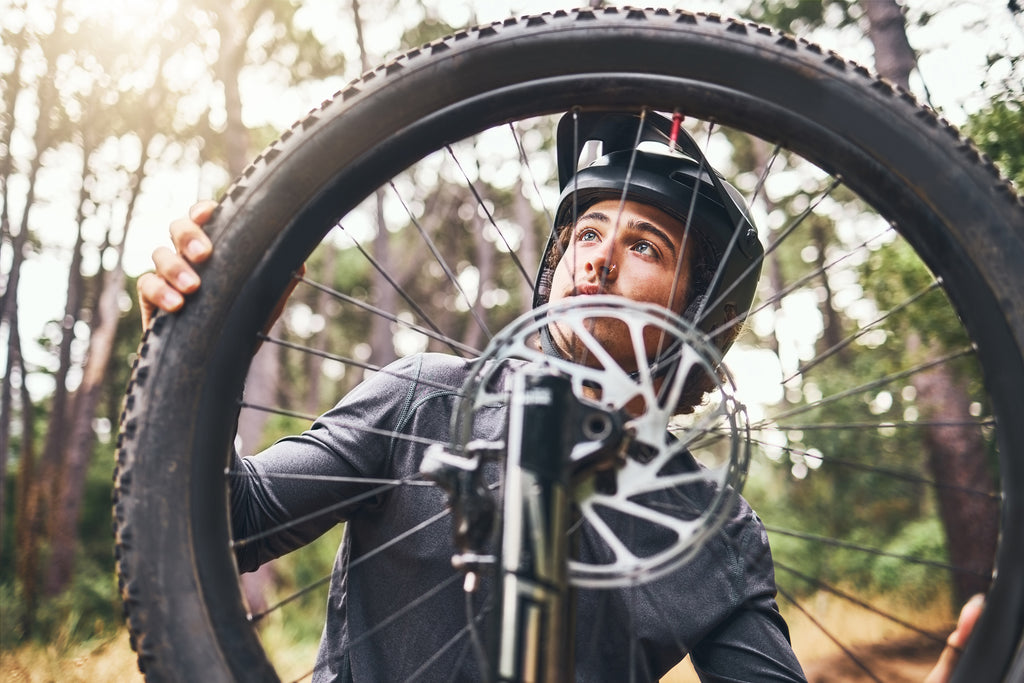
What pressure should mountain bike tires be?
As with many tech issues in cycling, the mountain bike designers have been at the forefront of lowering required tire pressures for mountain bikes. That’s because they saw the benefit of running wider tires with lower pressure from very early on.
But similarly to the differences between tire pressure for a road bike and tire pressure for a gravel bike, the various disciplines within mountain biking will also have slight variations on just how low you should go. So for instance, an XC-racing bike will likely run slightly higher pressure than an enduro or downhill bike.
Again, it’s important to pay attention to manufacturer recommendations and never pump the tires up above recommended tire pressures. In certain situations it is possible to run lower pressure than recommended, but that is something that you should do only when you are certain how your tire will respond to lower pressure. When you go too low when riding tubeless mountain bike tires, your tire may be inclined to burp. Burping happens when you hit something hard or at an awkward angle, and the tubeless tire bead is momentarily knocked off the rim. You’ll hear it, and there will be some resulting air loss, which is never desirable.
The simple fix is to put air back into the tire, so make sure you always carry a mini pump and/or CO2 cartridges. The best way to avoid burping is not to run your air pressure too low and make sure your tires aren’t too wide for the rims.
What should tire pressures be?
Though there are many guidelines to follow, like the ones covered in this article, it is still difficult to say precisely what tire pressure you should run. So many factors play into the answer and they can change daily. The tire pressures that the pros run, especially at important events like Paris-Roubaix, are often hotly guarded secrets.
When asking what pressure should bike tires be, it is a case where you will simply need to test different pressures and decide which works best for you. Another caveat is that just because a pressure feels faster, it might in fact be slower. If you are committed to getting the fastest rolling tire and running it at the ideal pressure for you and your riding conditions, then you will want to test different pressures using guides like your ride times, power output and VAM to ascertain whether one pressure really is the fastest for you.
The rest of us who are just riding for pleasure but would like to be as efficient as reasonably possible, the best thing to do is follow the manufacturer recommendations for the rims and tires, keeping in mind what pressure feels most comfortable on your roads.
Since every manufacturer offers slightly different suggestions for what pressure to run your tires on their wheels, we have curated here a few of the major brands that we carry for your convenience.
Enve
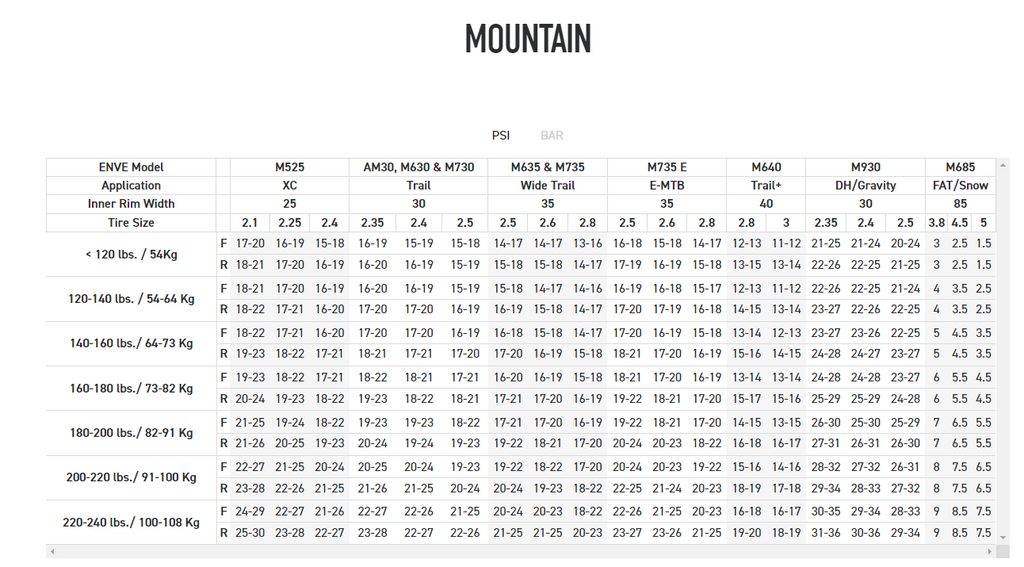
See more here: https://www.enve.com/learn/tire-pressure/
Black Inc
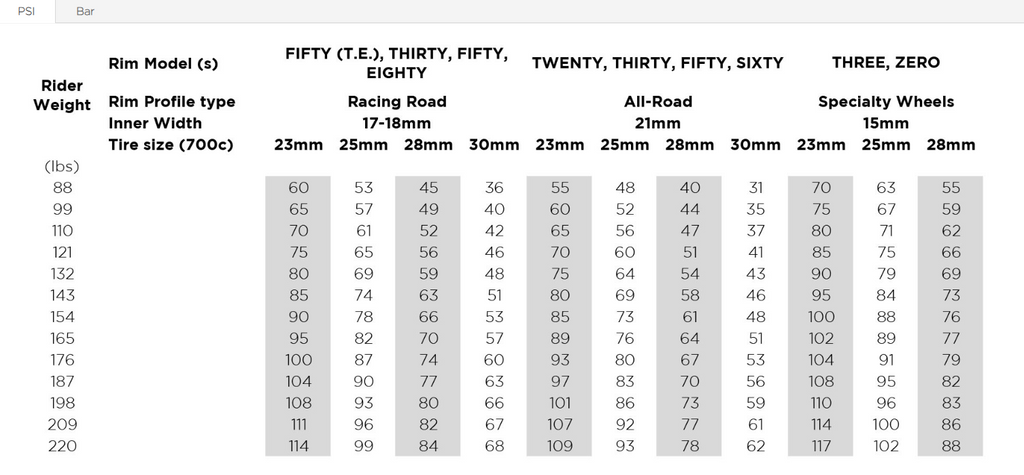 See more here: https://blackinc.cc/tire-pressure/
See more here: https://blackinc.cc/tire-pressure/
Shimano
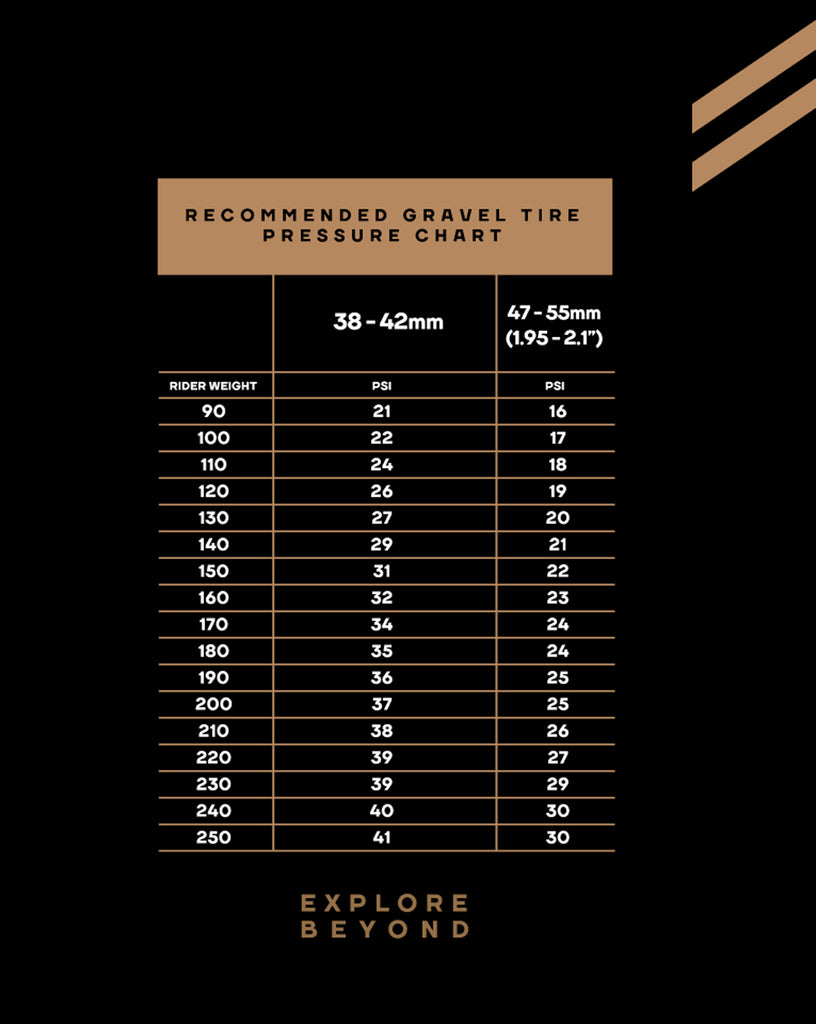 See more here: https://road.shimano.com/us/stories/what-tire-pressure-is-right-for-you
See more here: https://road.shimano.com/us/stories/what-tire-pressure-is-right-for-you






























































































































































































































































